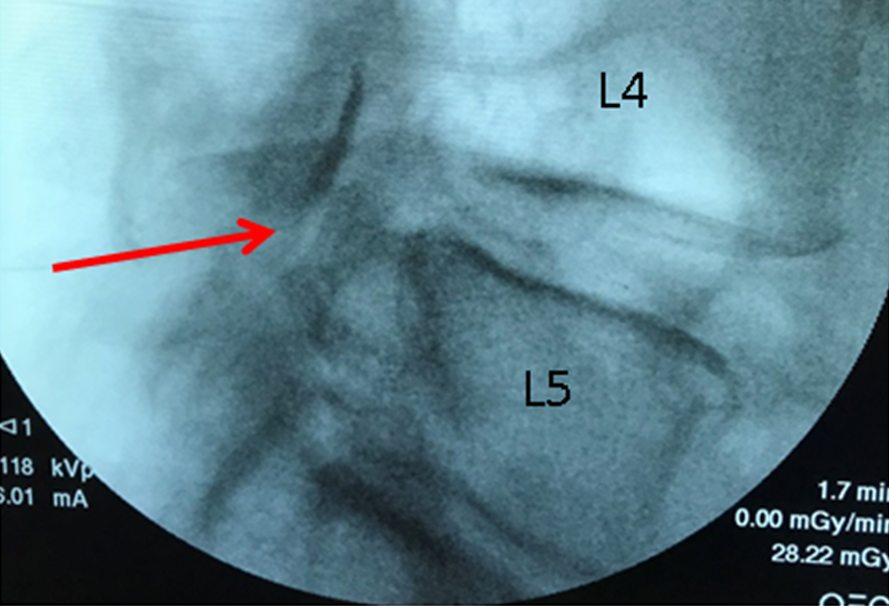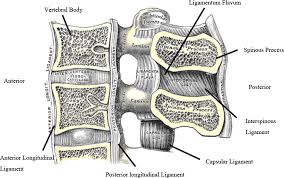Ligamentum Flavum – A Quick Run-Down
In most parts of Denver, physicians spend countless hours and dollars searching for the principal pain generator in patients with low back pain. This is due to the compartmental training that we received in medical school, residency, and fellowship. It was commonly believed that low back pain could be successfully isolated into one of the following three sources:
Lumbar Disc
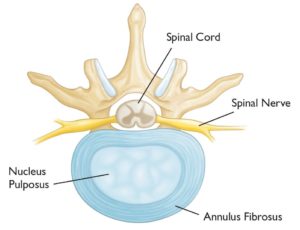
Lumbar Facet
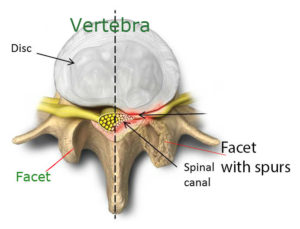
Lumbar Nerve
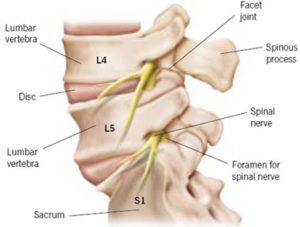
Accordingly, patients are appointed for “diagnostic injections,” which would identify the” principal” source of their pain. Such injections include facet injections, medial branch blocks, selective nerve root blocks, and epidural injections, all which were performed with high-dose steroids. The significant adverse side effects of steroids have been previously discussed:
- I shared before and after steroid injection images of the hip for one patient. The after image showed swelling the femur and acetabulum, advanced narrowing of the joint space, new cysts in both the ball of the joint and the socket.
- One research study found that only 25% of patients who undergo steroid injections into the sacroiliac joint still have significant pain relief three months after the injection.
- Studies have also shown that steroids are toxic to cartilage and only make arthritis worse in the long run.
- We’ve also seen that with each subsequent steroid injection, pain relief diminishes.
- Steroids also destroy stem cells, increase the risk of fractures of the spine, worsen tendititis, and disrupt the hormones responsible for stress management (the cortisol pituitary axis).
At the Centeno-Schultz Clinic, we acknowledge the interwoven nature of the body and reject compartmentalization.
The Functional Spinal Unit
In the late 1970s, White and Panjabi demonstrated that the 24 levels of the spine work together to provide a stable base of support for the rest of the body. This is referred to as the functional spine unit (FSU). The FSU is compromised for many parts, which include the disc, facet joints, bones, muscles, and ligaments.
To learn more about the these parts, watch Dr. Centeno’s video below:
The Ligamentum Flavum
.One very important spinal ligament is the ligamentum flavum.
The ligamentum flavum is compromised of elastic tissue that connects the lamina from the second cervical vertebrae down to the sacrum. When viewed from the side, the ligamentum flavum is adjacent to the interspinous ligament and forms a structural arch between the adjacent lamina.It functions to preserve the upright position and assist the vertebral column in resuming the upright posture after flexion.
Thickening of the ligamentum flavum increases with age in the lower lumbar levels and in patients with chronic back pain. When thickened, the ligamentum flavum has the potential of narrowing of the central spinal canal, which when physiologically significant is called stenosis.
Precise Guided Injections of the Ligamentum Flavum
At the Centeno-Schultz Clinic, we innovate in an effort to advance regenerative medicine and afford our patients the best clinical outcome. As part of the treatment of patients with lumbar disc disease and central-canal stenosis, we inject under X-ray the ligamentum flavum, which is shown below.
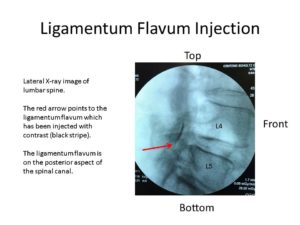
If you suffer from low back pain and your physician has not discussed treatment options that include X-ray–guided injections into the facets, epidural, nerve root, and ligaments, you are most likely not getting the best clinical care.
CAVEAT EMPTOR!
